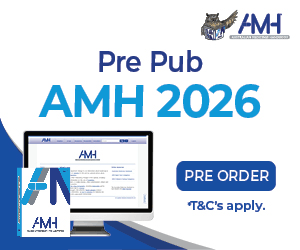The Australian healthcare system, under Medicare, provides comprehensive medical coverage for most basic health services.1
However, one crucial aspect that remains noticeably absent is the inclusion of dental care within the national healthcare framework.
Under the current system, children aged zero to 17 years are eligible for capped cover on some basic dental services under the Child Dental Benefits Schedule (CDBS).2 Those with Health Care Cards or Pensioner Concession Cards are also often eligible for some services, however, the terms and conditions vary across states and territories.3 This still leaves the majority of Australians without any form of government-subsidised dental care, and as such, when issues arise they are required to pay upfront, draw upon private health insurance, or go without care. This issue is being amplified by increasing costs of living and household budget pressures.
Key messages
- As oral health is linked to overall systemic health, poor oral hygiene can lead to a range of health issues including cardiovascular disease, respiratory illness, adverse pregnancy outcomes, and reduced life expectancy.
- The lack of dental care coverage in Medicare is causing significant barriers particularly for disadvantaged communities in accessing adequate oral health care.
- Cost has been identified as the single largest barrier to receiving dental care among Australian adults. This issue is amplified with rising cost of living pressures.
- The lack of preventive oral care can lead to heightened pressures on other health care sectors, such as the emergency department, and is economically detrimental in terms of costs of treating otherwise avoidable health issues and loss of productivity through disease.
- The inclusion of dental under Medicare will likely come with a financial burden on Government, however, introducing schemes to support access for the most vulnerable populations first and then expanding inclusion criteria over time, may be an effective way of mitigating this burden.
- Overall, the wider economic, health, and social benefits of including dental in Medicare are likely to go far in offsetting the costs.
- Australians demonstrate a relatively health-conscious attitude towards oral health and would likely take advantage of interventions that support ease of access, improving the nation’s oral health.
The Oral-Systemic Connection
Numerous studies have demonstrated a correlation between oral health and overall systemic health.4,5 Poor oral health, including untreated dental conditions and gum diseases, has been associated with an increased risk of cardiovascular disease,6-8 respiratory illness,9,10 adverse pregnancy outcomes,11 and overall life expectancy.12-14 Poor dental health can also lead to complications such as; toothache, bleeding gums and tooth sensitivity, higher rates of dental caries, periodontal disease and gingivitis, being uncomfortable with dental appearance, untreated decay, tooth loss, and avoiding certain foods due to dental problems.15-23
In Australia dental carries is one of the most common health complications, with one-third of Australians having untreated dental carries, and an overall prevalence of periodontitis and gingivitis of 29% and 30.1% respectively in the general public.20 Regular visits to the dentist, among other oral health behaviours (i.e., frequently brushing and using mouthwash) have been found to reduce the prevalence of most oral diseases.24-26
Poor oral health is particularly impactful among the elderly, with dental diseases closely linked to systemic health issues and reductions in quality of life.27 Serious dental infections among the elderly have also been found to increase mortality rates up to 3.9 times.28 Poor oral health also contributes to the prevalence of edentulism (tooth loss) among the elderly,29 leading to psychological impacts such as reduced self-esteem,30 and complications such as chewing difficulties and dietary restrictions,31 furthering the risk of mortality.30
Oral health complications in Australia are also disproportionally observed in Indigenous populations and First Nations People.32 Among those who identify as Aboriginal or Torrens Strait Islander, higher rates of edentulism, untreated tooth decay, experiencing dental discomfort, and dental carries is observed.33 A particular disparity is observed among First Nation children, with higher rates of preventable dental carries compared to non-Indigenous children,34 leading to a reduced quality of life.35 It has been suggested that the disparity in negative dental outcomes may be due to the lack of culturally appropriate services and intervention methods.32
Inequitable Access
Access to dental care in Australia remains largely inequitable, with disadvantaged populations facing significant barriers to receiving adequate oral health care due to the high, and unsubsidised, cost of services. In 2021-22 dental care was estimated at $432 per capita.36 Common preventative and diagnostic treatments come with an upfront cost that ranges between $37-$180 per appointment.37 Because of the cost of services and lack of public funding, many people opt for health insurance with dental coverage. Around half of Australians aged five years and up have private dental coverage,36 however, this leaves around 12.8 million Australians without any form of dental care coverage, and when issues arise they are required to pay the full fee upfront or go without treatment.
While at some advantage, those with private health are still required to pay a subsidy to receive dental care. In 2021-22 the median gap for diagnosis and examination treatments, restorative services, tooth removal, and full crown was $14, $74, $95, and $903 respectively.36 Across services an insured individual can expect a gap of approximately 52%,36 meaning the individual is still responsible for paying for over half of the cost of care on top of the insurance fees.
Because of the cost of dental services those who cannot afford to pay up often go without treatment. In 2020-21 only 48% of Australians reported seeing a dental professional in the last 12 months,38 with around 18.1% of Australians reporting delaying or not using public dental services due to the cost.16,36,38,39 Uninsured people are reported to be twice as likely to avoid treatment due to costs and twice as likely to report having difficulty paying for a $100-200 dental bill compared to the insured.16,38
Findings from an Australian study revealed that insured adults had more favourable dental visiting patterns (visiting a dentist at least once per year) compared to uninsured adults,16,19 with the biggest barrier of attendance reported as the cost of dental care.15,16 A 2013 study, analysing dental avoidance trends between 1994 – 2010 found that financial barriers were most prevalent among adults in their mid to late twenties compared to children and older adults.40 The authors suggest that the difference between cohorts could be mostly explained by the presence of oral health policies targeting specifically younger children and the elderly that were in effect at the time.40
Cost as a barrier is most evident in disadvantaged communities, with only 22% those from low-income households having a dental appointment in the past 12 months vs 56% from high-income households.15,16 Identifying cost as a barrier to seeking dental care has been associated with age, being female, being Indigenous,20,41,42 and not having dental insurance.38 In Australia reliable patterns are evident with those from lower socioeconomic groups consistently displaying poorer oral health outcomes,16,25,38,43-45 even when controlling for health behaviours.46
While private insurance for dental care has been linked to increased oral health, it is important to note that the barrier to receiving care still relates to the costs. The proportion of Australians five and up with insurance with dental cover has been positively associated with annual income.36 Private insurance, while reducing upfront costs of dentist appointments, is still a financial burden, and is not a viable option for all Australians, particularly for those of low socioeconomic status. It is important to contextualize that the barriers to affording dental care are still present in affording insurance. Further privatisation of dental care and the lack of public funding will have the greatest effect on vulnerable populations, furthering the gap in oral health outcomes between high and low socioeconomic groups.47
The Economic Impact of Untreated Dental Conditions
The exclusion of dental care from the healthcare system not only has detrimental effects on individual health but also imposes a considerable economic burden on the healthcare system. In 2019-20 the total expenditure in primary health care on oral disorders was $7.1 billion, accounting for the highest proportion of spending among disease groups, with the treatment of dental carries alone accounting for $4.3 billion of this expenditure.36
Because of the widespread avoidance of preventive dental care measures, preventable and treatable dental issues often become exacerbated, leading to people admitting themselves to emergency departments.48,49 In 2020–21, 83,000 hospitalisations could potentially have been prevented with earlier dental care treatment,16 costing the health care system approximately $44 million in non-admitted ED presentations.50 Globally, dental disease treatment accounts for 4.6% of yearly health expenditure, with indirect costs (i.e., productivity losses due to dental issues) estimated at US $144B yearly, with severe periodontitis accounting for the highest proportion of lost productivity in Australasia.51
Nurses and Midwives in Dental Care
While nurses and midwives do not provide dental care, responsibilities related to providing oral care are within their scope of practice. The distinction here is that oral care delivered by nurses relates to preventive treatments such as assisting in brushing, attending to oral hygiene needs, and using early detection assessments, while dental care is performed by a dentist. Nurses provide oral care particularly in aged care environments, long-term inpatient settings, and for those who have suffered from conditions that cause temporary mobility issues such as stroke sufferers.52 In midwifery, too, a large emphasis is placed on the promotion of oral care,53-55 due to its link with birth outcomes.11 The main role of nurses and midwives within the dental care setting is referring patients to dental care services/densits,56 however the advice they give can be undermined by the unaffordability of dental care services.53,57-59
Implementation Plans
A report entitled ‘filling the gap: A universal dental scheme for Australia’ by the Grattan Institute calls for Australia to introduce a Medicare-style insurance scheme of primary dental care. They outline a four-phase plan that can be rolled out over 10 years. The four phases are for the Commonwealth to:
- continue and assume responsibility for the Child Dental Benefits Schedule (CDBS) and other public dental services providing greater funding;
- expand the number of people who are eligible for publicly funded dental care who hold Health Care Card and Pensioner Concession Cards;
- cover all children under the CDBS, despite socioeconomic status; and
- create a Universal scheme.
This plan is estimated to cost the Commonwealth over $9 billion overall, with estimated costs between $1.06-$2.83 billion for phase one, $1.53-$3.75 billion for phase 2, $1.99-$5.04 billion for phase 3, and $5.39-$11.17 billion for phase 4.60
Not all groups are supportive of universal dental coverage in Australia. The Australian Dental Association holds the position that a ‘universal dental scheme is not a practical solution’, and instead suggests that funding should target disadvantaged Australians.61 The association proposes two income-tested schemes; one for adults aged 18-64 and another for seniors aged 65+, under the Australian Dental Health Plan (ADHP). Both schemes would target those who hold Health Care or Pensioner Concession Cards. The plan suggests adjusting the CDBS criteria, creating a Seniors Dental Benefits Schedule (SDBS), and an Adult Dental Benefits Schedule (ADBS) that targets those with low income. The plan has been estimated at $6.3 billion upfront and $3.9 billion per annum which could be covered by a 0.5% increase in the Medicare Levy.62
While the financial implications of including dental in Medicare is important to consider, the social and health benefits should be the primary focus. A plan, such as the one proposed by the Grattan Institute may place a significant financial burden on the commonwealth, with conservative plans, such as the one proposed by the Australian Dental Association, mitigating this. A balance among these plans may find an adequate compromise; introducing schemes to target the most vulnerable (the elderly, Aboriginal and Torrens Strait Islanders, and the socioeconomically disadvantaged) then expanding inclusion criteria over time until the entire population has some form of basic dental cover.
Conclusion
The ANMF is committed to advocating for dental care to be included under Australia’s Medicare system. Australia’s approach to dental care and oral health should be adjusted to bridge the gap in inequitable access to dental care to improve oral and overall systemic health. It is likely that this would require reforms to the existing Medicare system. When compared United Kingdom, and Germany (which cover 76-99% of dental care costs) Australia had comparably better oral health, with higher frequencies of dental flossing, use of mouthwash and higher rates of dental attendance.63 Findings suggest that despite funding issues, Australians are relatively proactive in terms of oral health, and would, therefore take advantage of a scheme that provided government-supported dental care.
While implementing a plan to improve dental coverage as either a universal access scheme or one that targets particularly vulnerable populations who face payment barriers would come with substantial upfront costs, the improvement of national oral health would see long terms system-wide, community, and individual benefits.
References
-
Services Australia. About Medicare [Internet]. Australian Government; 2023. [Updated 17 Feb 2023]. Available from: https://www.servicesaustralia.gov.au/about-medicare?context=60092.
-
Services Australia. Child Dental Benefits Schedule [Internet]. Australian Government; 2022. [Updated 1 Jan 2022]. Available from: https://www.servicesaustralia.gov.au/child-dental-benefits-schedule.
-
Australian Dental Association. Government dental care [Internet]. Teeth.org.au; 2023. [Updated 31 Jul 2023]. Available from: https://www.teeth.org.au/government-dental-care#section-304499.
-
Alpert PT. Oral health: the oral-systemic health connection. Home Health Care Manag Pract. 2017; 29(1): 56-9.
-
Joseph BK, Kullman L, Sharma PN. The oral-systemic disease connection: a retrospective study. Clin Oral Investig. 2016; 20(8): 2267-73.
-
Mattila KJ, Nieminen MS, Valtonen VV, et al. Association between dental health and acute myocardial infarction. BMJ. 1989; 298(6676): 779-81.
-
DeStefano F, Anda RF, Kahn HS, Williamson DF, Russell CM. Dental disease and risk of coronary heart disease and mortality. BMJ. 1993; 306(6879): 688-91.
-
Seymour RA, Steele JG. Is there a link between periodontal disease and coronary heart disease? BMJ. 1998; 184(1): 33-8.
-
Cordero OJ, Varela-Calviño R. Oral hygiene might prevent cancer. Heliyon. 2018; 4(10): e00879.
-
Vargas MH, Macedo-Sánchez F, Solís-Torres C, Rubio-Monteverde H, Furuya ME. Oral hygiene and dental status as factors related to asthma in high school and college students. J Asthma. 2015; 52(4): 376-81.
-
Hartnett E, Haber J, Krainovich-Miller B, Bella A, Vasilyeva A, Lange Kessler J. Oral Health in Pregnancy. J Obstet Gynecol Neonatal Nurs. 2016; 45(4): 565-73.
-
Matsuyama Y, Aida J, Watt RG, et al. Dental Status and Compression of Life Expectancy with Disability. J Dent Res. 2017; 96(9): 1006-13.
-
Matsuyama Y, Tsakos G, Listl S, Aida J, Watt RG. Impact of Dental Diseases on Quality-Adjusted Life Expectancy in US Adults. J Dent Res. 2019; 98(5): 510-6.
-
Kim JK, Baker LA, Davarian S, Crimmins E. Oral health problems and mortality. J Dent Sci. 2013; 8(2): 115-20.
-
Ellershaw A, Spencer A. Dental Attendance Patterns and Oral Health Status. [Internet] Canberra (AU): Australian Institute of Health and Welfare; 2011. Available from: https://health.adelaide.edu.au/arcpoh/downloads/publications/reports/dental-statistics-research-series/2011-insurance-use-dental-services.pdf
-
Chrisopoulos S, Harford JE, Ellershaw A. Oral health and dental care in Australia: key facts and figures 2015. [Internet] Canberra (AU): Australian Institute of Health and Welfare; 2016. [Updated 22 Dec 2021]. Available from: https://www.aihw.gov.au/reports/dental-oral-health/oral-health-dental-care-2015-key-facts-figures/summary
-
Chrisopoulos S, Harford J. Oral health and dental care in Australia: key facts and figures 2012. [Internet] Canberra (AU): Australian Institute of Health and Welfare; 2013. [Updated 22 June 2022]. Available from: https://www.aihw.gov.au/reports/dental-oral-health/oral-health-dental-care-2012-key-facts-figures/summary
-
Crocombe LA, Broadbent JM, Thomson WM, Brennan DS, Poulton R. Impact of dental visiting trajectory patterns on clinical oral health and oral health-related quality of life. J Public Health Dent. 2012; 72(1): 36-44.
-
Gnanamanickam E, Teusner D, Arrow P, Brennan D. Dental insurance, service use and health outcomes in Australia: a systematic review. Aus Dent J. 2018; 63(1): 4-13.
-
Amarasena N, Chrisopoulos S, Jamieson LM, Luzzi L. Oral Health of Australian Adults: Distribution and Time Trends of Dental Caries, Periodontal Disease and Tooth Loss. Int J Environ Res Public Health. 2021; 18(21).
-
Zaitsu T, Ueno M, Shinada K, Wright FA, Kawaguchi Y. Social anxiety disorder in genuine halitosis patients. Health Qual Life Outcomes. 2011; 9(1): 94.
-
McGrath C, Broder H, Wilson-Genderson M. Assessing the impact of oral health on the life quality of children: implications for research and practice. Community Dent Oral Epidemiol. 2004; 32(2): 81-5.
-
Reisine ST. Dental health and public policy: the social impact of dental disease. Am J Public Health. 1985; 75(1): 27-30.
-
Petersen PE. Effectiveness of oral health care: Some Danish experiences. Proc Finn Dent Soc. 1992; 88(1-2): 13-23.
-
Mejia GC, Elani HW, Harper S, et al. Socioeconomic status, oral health and dental disease in Australia, Canada, New Zealand and the United States. BMC Oral Health. 2018; 18(1): 176.
-
Sabbah W, Tsakos G, Sheiham A, Watt RG. The role of health-related behaviors in the socioeconomic disparities in oral health. Soc Sci Med. 2009; 68(2): 298-303.
-
Gil-Montoya JA, Ferreira de Mello AL, Barrios R, Gonzalez-Moles MA, Bravo M. Oral health in the elderly patient and its impact on general well-being: a nonsystematic review. Clin Interv Aging. 2015; 10: 461-7.
-
Meurman JH, Hämäläinen P. Oral health and morbidity – implications of oral infections on the elderly. Gerodontology. 2006; 23(1): 3-16.
-
Borg-Bartolo R, Roccuzzo A, Molinero-Mourelle P, et al. Global prevalence of edentulism and dental caries in middle-aged and elderly persons: A systematic review and meta-analysis. J Dent. 2022; 127: 104335.
-
Polzer I, Schimmel M, Müller F, Biffar R. Edentulism as part of the general health problems of elderly adults. Int Dent J. 2010; 60(3): 143-55.
-
Locker D, Matear D, Stephens M, Jokovic A. Oral health-related quality of life of a population of medically compromised elderly people. Community Dent Health .2002; 19(2): 90-7.
-
Brennan DS, Roberts-Thomson KF, Spencer AJ. Oral health of Indigenous adult public dental patients in Australia. Aus Dent J. 2007; 52(4): 322-8.
-
Mejia GC, Parker EJ, Jamieson LM. An introduction to oral health inequalities among Indigenous and non-Indigenous populations. Int Dent J. 2010; 60(3S2): 212-5.
-
Parker EJ, Jamieson LM, Broughton J, Albino J, Lawrence HP, Roberts-Thomson K. The oral health of Indigenous children: A review of four nations. J Paediatr Child Health. 2010; 46(9): 483-6.
-
Lee J, Schroth R, Sturym M, et al. Oral health status and oral health–related quality of life of First Nations and Metis children. JDR Clin Trans Res. 2022; 7(4): 435-45.
-
Australian Institute of Health and Welfare. Oral health and dental care in Australia. [Internet] Canberra (AU): AIHW, 2023. [Updated 17 Mar 2023]. Available from: https://www.aihw.gov.au/reports/dental-oral-health/oral-health-and-dental-care-in-australia/contents/introduction.
-
ACA Research. Dental Fees Survey Private Practice Members. [Internet]. Australian Dental Association; 2016. Available from: https://dentalboutique.com.au/wp-content/uploads/2017/04/Benchmarking-Dental-Fees-Survey-average-fee-for-dental-service-Australia.pdf
-
Chrisopoulos S, Ellershaw A, Luzzi L. National Study of Adult Oral Health 2017-18: Study design and methods. Aust Dent J. 2020;65 Suppl 1:S5-S10. doi: 10.1111/adj.12758.
-
Australian Bureau of Statistics. Patient Experiences, 2021-22 financial year [Internet]. 2022. [Updated 21 Nov 2023]. Available from: https://www.abs.gov.au/statistics/health/health-services/patient-experiences/2021-22.
-
Chrisopoulos S, Luzzi L, Brennan DS. Trends in dental visiting avoidance due to cost in Australia, 1994 to 2010: an age-period-cohort analysis. BMC Health Serv Res. 2013; 13(1): 381.
-
Jamieson L, Hedges J, Dodd Z, et al. Provision of Dental Care to Indigenous South Australians and Impacts on Improved General Health: Study Protocol. Int J Environ Res Public Health. 2023; 20(4).
-
Tynan A, Walker D, Tucker T, Fisher B, Fisher T. Factors influencing the perceived importance of oral health within a rural Aboriginal and Torres Strait Islander community in Australia. BMC Public Health. 2020; 20(1): 514.
-
Armfield JM, Ketting M. Predictors of dental avoidance among Australian adults with different levels of dental anxiety. Health Psychol. 2015; 34: 929-40.
-
Brennan DS, Luzzi L, Roberts-Thomson KF. Dental service patterns among private and public adult patients in Australia. BMC Health Serv Res. 2008; 8(1): 1.
-
Mejia G, Jamieson L, Ha D, Spencer A. Greater inequalities in dental treatment than in disease experience. J Dent Res. 2014; 93(10): 966-71.
-
Sanders AE, Spencer AJ, Slade GD. Evaluating the role of dental behaviour in oral health inequalities. Community Dent Oral Epidemiol. 2006; 34(1): 71-9.
-
Teusner D, Brennan D, Spencer A. Associations between level of private dental insurance cover and favourable dental visiting by household income. Aust Dent J. 2015; 60(4): 479-89.
-
Verma S, Chambers I. Dental emergencies presenting to a general hospital emergency department in Hobart, Australia. Aust Dent J. 2014; 59(3): 329-33.
-
Yap M, Kok M-R, Nanda S, Vickery A, Whyatt D. Hospital admissions and emergency department presentations for dental conditions indicate access to hospital, rather than poor access to dental health care in the community. Aust J Prim Health. 2018; 24(1): 74-81.
-
Independent Health and Aged Care Pricing Authority. National Hospital Cost Data Collection (NHCDC) Public Hospitals Report – Round 23 (financial year 2018–19). [Internet] IHACPA; 2021. [Updated 16 Feb 2021]. Available from: https://www.ihacpa.gov.au/resources/national-hospital-cost-data-collection-nhcdc-public-hospitals-report-2018-19
-
Listl S, Galloway J, Mossey PA, Marcenes W. Global Economic Impact of Dental Diseases. J Dent Res. 2015; 94(10): 1355-61.
-
Ajwani S, Jayanti S, Burkolter N, et al. Integrated oral health care for stroke patients – a scoping review. J Clin Nurs. 2017; 26(7-8): 891-901.
-
George A, Johnson M, Blinkhorn A, Ellis S, Bhole S, Ajwani S. Promoting oral health during pregnancy: current evidence and implications for Australian midwives. J Clin Nurs. 2010; 19(23-24): 3324-33.
-
George A, Dahlen HG, Blinkhorn A, et al. Evaluation of a midwifery initiated oral health-dental service program to improve oral health and birth outcomes for pregnant women: A multi-centre randomised controlled trial. Int J Nurs Stud. 2018; 82: 49-57.
-
Heilbrunn-Lang AY, de Silva AM, Lang G, et al. Midwives’ perspectives of their ability to promote the oral health of pregnant women in Victoria, Australia. BMC Pregnancy Childbirth. 2015; 15(1): 110.
-
Swerissen H, Duckett S, Moran G. Mapping primary care in Australia. [Internet] Grattan Institute; 2018. Available from: https://grattan.edu.au/wp-content/uploads/2018/07/906-Mapping-primary-care.pdf
-
Marshall RI, Spencer AJ. Accessing oral health care in Australia. Med J Aust. 2006; 185(2):59-60. doi: 10.5694/j.1326-5377.2006.tb00470
-
Lim M, Riggs E, Shankumar R, Marwaha P, Kilpatrick N. Midwives’ and women’s views on accessing dental care during pregnancy: an Australian qualitative study. Aus Dent J. 2018; 63(3): 320-8.
-
Nicol P, Anthonappa R, King N, Slack-Smith L, Cirillo G, Cherian S. Caries burden and efficacy of a referral pathway in a cohort of preschool refugee children. Aus Dent J. 2015; 60(1): 73-9.
-
Duckett S, Cowgill M, Swerissen H. Filling the gap: A universal dental scheme for Australia. [Internet] Grattan Institute; 2019. Available from: https://grattan.edu.au/wp-content/uploads/2019/03/915-Filling-the-gap-A-universal-dental-scheme-for-Australia.pdf
-
Australian Dental Association. Policy Statement 2.5.2 – Universal Dental Schemes. [Internet] ADA; 2020. Available from: https://www.ada.org.au/Professional-Information/Policies/National-Oral-Health/2-5-2-Universal-Dental-Schemes/ADAPolicies_2-5-2_UniversalDentalSchemes-_V1.aspx
-
Australian Dental Association. The Australian Dental Health Plan. [Internet] ADA; 2019. Available from: https://www.ada.org.au/ADHP
-
Crocombe LA, Mejia GC, Koster CR, Slade GD. Comparison of adult oral health in Australia, the USA, Germany and the UK. Aust Dent J. 2009; 54(2): 147-53.
Authors:
Jarrod Clarke and Adjunct Associate Professor Dr Micah DJ Peters are based in the Australian Nursing and Midwifery Federation’s (ANMF) National Policy Research Unit (Federal Office) at the Rosemary Bryant AO Research Centre, Clinical and Health Sciences, University of South Australia.









One Response
This article really hits the mark on the importance of including dental care in Medicare. Oral health is inseparable from overall health, and ensuring everyone has access to dental care is vital for a healthier population. The arguments presented here are compelling and underscore the need for policy change. Let’s hope policymakers take note and prioritize dental care as an integral part of healthcare for all Australians.